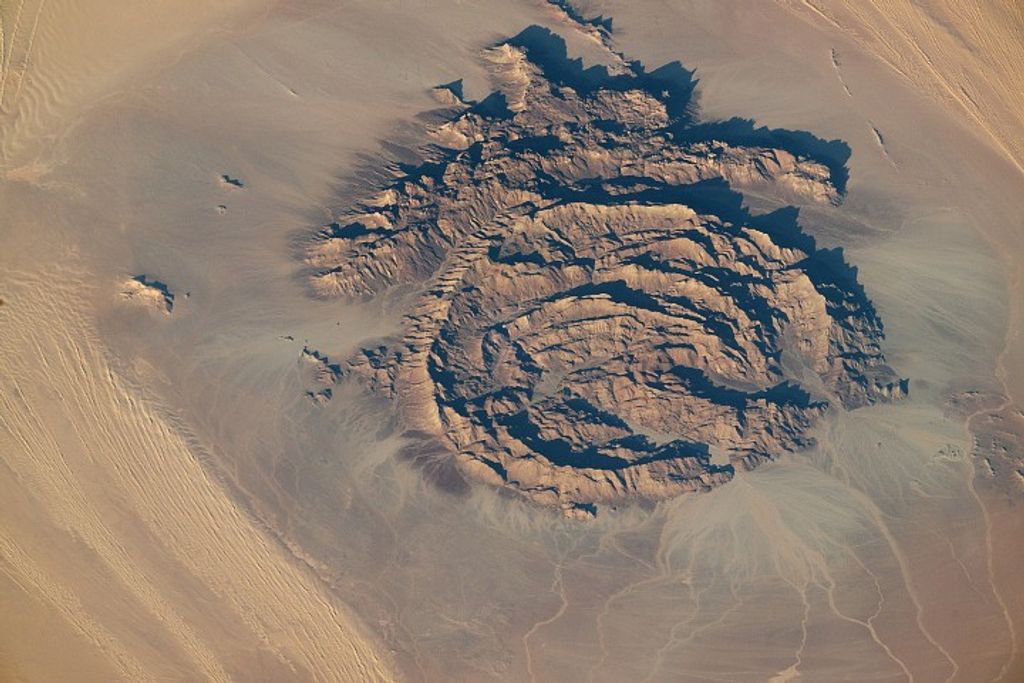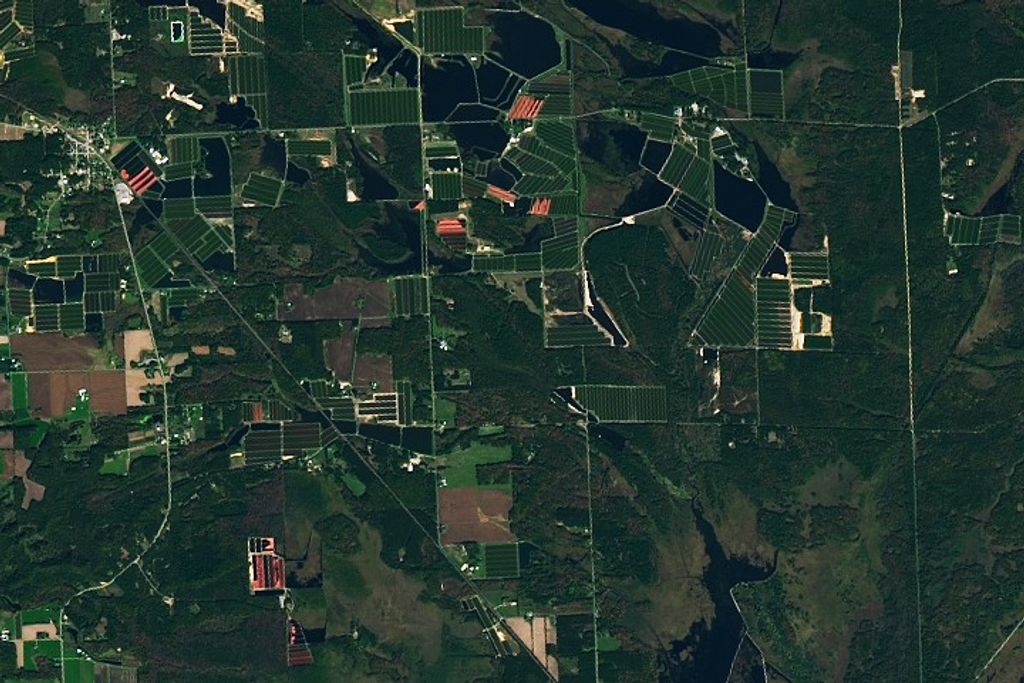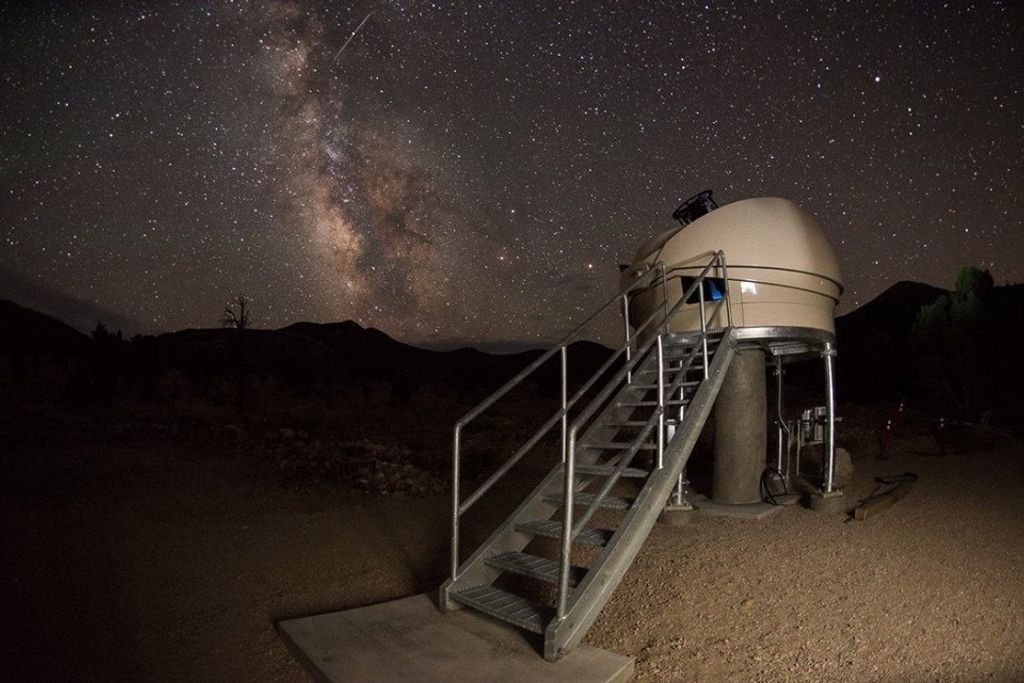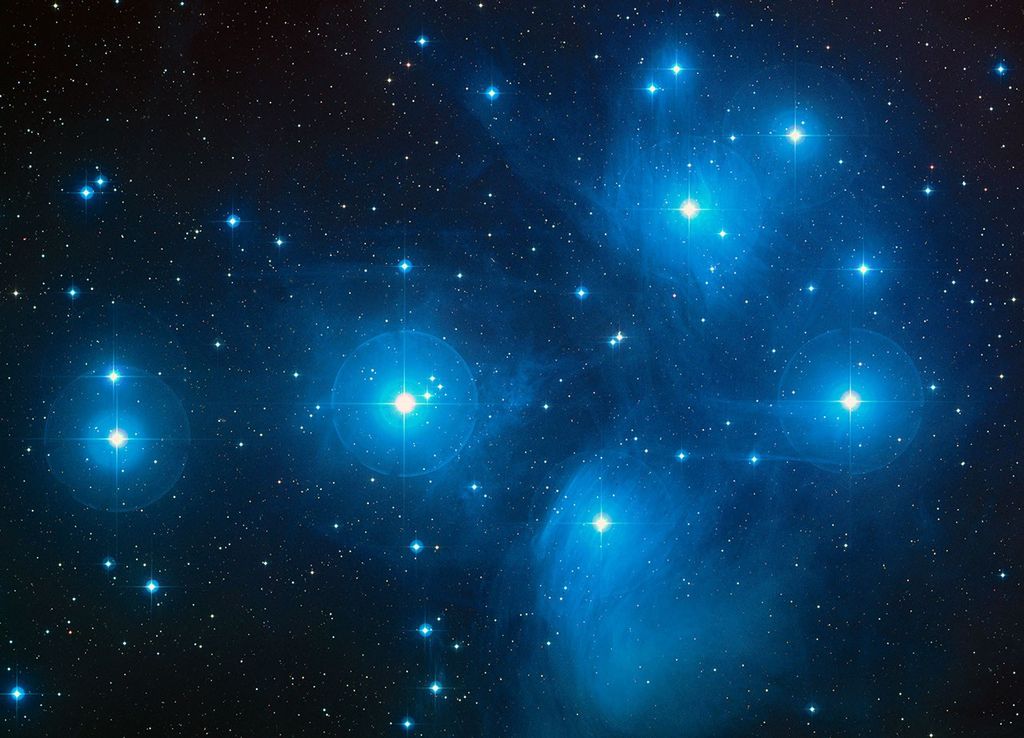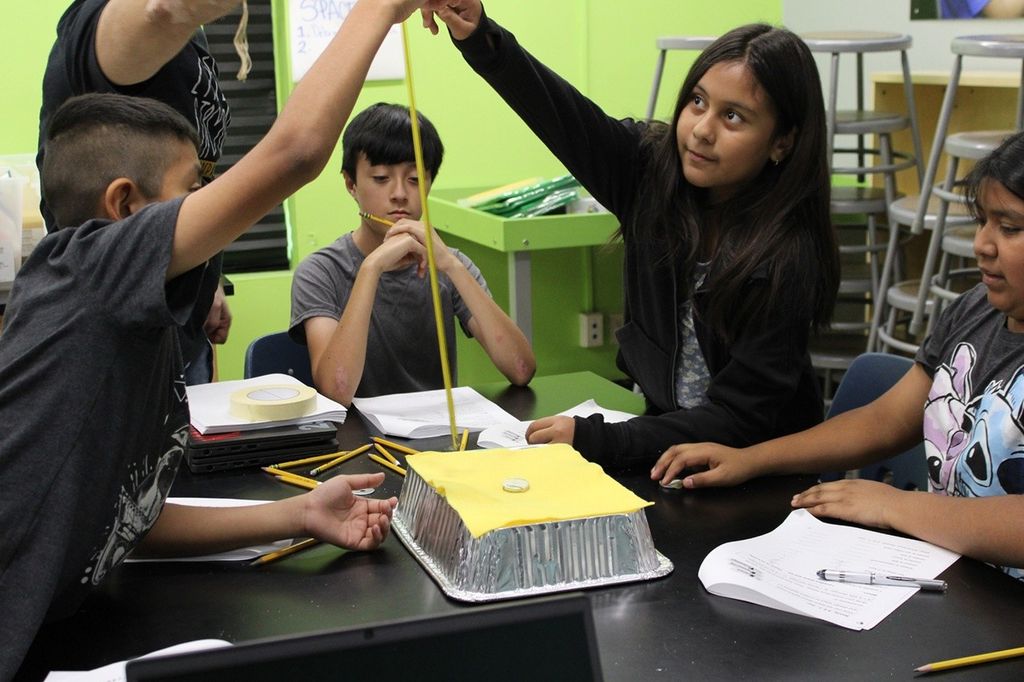Explore Goddard Missions
Since 1959, Goddard has been the home to missions and projects that explore the cosmos from our home planet and beyond. Learn more about operational and past missions supported by Goddard.
Featured Missions

James Webb Space Telescope
Webb studies every phase in the history of our Universe, ranging from the first luminous glows after the Big Bang, to the formation of solar systems capable of supporting life on planets like Earth, to the evolution of our own Solar System. Webb launched on Dec. 25th 2021.

PACE
NASA's Plankton, Aerosol, Cloud, ocean Ecosystem mission launched Feb. 8, 2024 and is extending and improving NASA's over 20-year record of satellite observations of global ocean biology, aerosols (tiny particles suspended in the atmosphere), and clouds.

Parker Solar Probe
On a mission to “touch the Sun,” NASA's Parker Solar Probe became the first spacecraft to fly through the corona – the Sun’s upper atmosphere – in 2021. With every orbit bringing it closer, the probe faces brutal heat and radiation to provide humanity with unprecedented observations, visiting the only star we can study up close.
Operational Missions

ACE: Advanced Composition Explorer
Designed to collect and analyze particles from near and far, ranging from solar wind ions to galactic cosmic ray nuclei, ACE far exceeded its expected life span of five years and continues to provide data on space weather, and give advance warning of geomagnetic storms.

Aqua
Aqua is a NASA Earth Science satellite mission that is collecting data about the Earth's water cycle.


CALIPSO
CALIPSO provides new insight into the role that clouds and atmospheric aerosols (airborne particles) play in regulating Earth's weather, climate, and air quality.

CloudSat
CloudSat was designed to provide observations to advance our understanding of cloud abundance, distribution, structure, and radiative properties.

Curiosity
Part of NASA's Mars Science Laboratory mission, Curiosity, was the largest and most capable rover ever sent to Mars when it launched in 2011. Curiosity set out to answer the question: Did Mars ever have the right environmental conditions to support small life forms called microbes? Early in its mission, Curiosity's scientific tools found chemical and mineral evidence of past habitable environments on Mars. It continues to explore the rock record from a time when Mars could have been home to microbial life.

Fermi Gamma-ray Space Telescope
NASA's Fermi Gamma-ray Space Telescope is a powerful space observatory that detects gamma rays, the most energetic form of light. Fermi enables scientists to address questions across a broad range of topics, from crushed stellar remnants like pulsars and the origin of high-energy charged particles called cosmic rays to stellar explosions known as gamma-ray bursts.

Global Precipitation Measurement (GPM)
The GPM is an international network of satellites that provide next-generation global observations of rain and snow.

GOES
Geostationary Operational Environmental Satellites (GOES) is a collaborative NOAA and NASA program providing continuous imagery and data on atmospheric conditions and solar activity ( space weather ). NASA builds and launches the GOES and NOAA operates them.


Hubble
Throughout the history of science, revolutionary instruments propel our understanding with their landmark discoveries. The Hubble Space Telescope is a testament to that concept. Its design, technology and serviceability have made it one of NASA's most transformative observatories. From determining the atmospheric composition of planets around other stars to discovering dark energy, Hubble has changed humanity's understanding of the universe.

IBEX
IBEX is a NASA spacecraft studying how our heliosphere, the magnetic bubble surrounding our Sun and planets, interacts with interstellar space. IBEX created the first maps showing the interactions at that border, and how they change over time.

ICESat-2
ICESat-2 measures the height of a changing Earth, one laser pulse at a time, 10,000 laser pulses a second.

INTEGRAL
ESA's (European Space Agency) INTEGRAL mission observes the universe in gamma-ray, X-ray, and visible light. It uses spectroscopy and wide-field-of-view imaging to study gamma-ray bursts, supernovae, X-ray binaries, active galaxies, and other phenomena. NASA aided INTEGRAL’s development and supports the U.S. scientific community’s use of the mission.

IRIS
IRIS observes how solar material moves, gathers energy, and heats up as it travels through a little-understood region in the Sun's lower atmosphere.

James Webb Space Telescope
Webb studies every phase in the history of our Universe, ranging from the first luminous glows after the Big Bang, to the formation of solar systems capable of supporting life on planets like Earth, to the evolution of our own Solar System. Webb launched on Dec. 25th 2021. It does not orbit around the Earth like the Hubble Space Telescope, it orbits the Sun 1.5 million kilometers (1 million miles) away from the Earth at what is called the second Lagrange point or L2.

LAGEOS
LAGEOS was the first spacecraft dedicated exclusively to high-precision laser ranging. LAGEOS-2, based on the original LAGEOS design, was built by the Italian Space Agency and launched in 1992. Looking like 900-pound golf balls, this pair of satellites with no sensors, electronics, or moving parts, but dimpled with hundreds of reflecting prisms, have helped scientists measure the movement of Earth’s tectonic plates, detect irregularities in the rotation of the planet, weigh it, and track small shifts in its center of mass. All this simply by being reliable targets for incredibly accurate laser measurements from the surface.

Landsat
The NASA/USGS Landsat Program provides the longest continuous space-based record of Earth’s land in existence. Landsat data give us information essential for making informed decisions about Earth’s resources and environment.

Landsat 7
Landsat 7 continued the long-term Earth observation Landsat program begun in 1972. Landsat 7 was a joint project between NASA, NOAA, and the US Geological Survey to obtain continuous high-resolution imagery of the Earth's surface.

Landsat 8
Landsat 8 was a collaboration between NASA and the U.S. Geological Survey to provide moderate-resolution measurements of the Earth’s terrestrial and polar regions.

Landsat 9
Landsat 9 – a partnership between NASA and the U.S. Geological Survey – will continue the Landsat program’s critical role in monitoring, understanding, and managing the land resources needed to sustain human life.

LRO (Lunar Reconnaissance Orbiter)
LRO (Lunar Reconnaissance Orbiter) was the first U.S. mission to the Moon in over 10 years. LRO created a 3D map of the Moon, as part of a program to identify future landing sites and resources – including deposits of water ice shadowed in polar craters. LRO continues to orbit the Moon.

Lucy
Lucy will explore a record-breaking number of asteroids, flying by three asteroids in the solar system’s main asteroid belt, and by eight Trojan asteroids that share an orbit around the Sun with Jupiter.

MAVEN
The Mars Atmosphere and Volatile EvolutioN (MAVEN) mission will determine how much of the Martian atmosphere has been lost over time by measuring the current rate of escape to space and gathering enough information about the relevant processes to allow extrapolation backward in time.

New Horizons
The first spacecraft to explore Pluto up close, flying by the dwarf planet and its moons in 2015. After a nine-year journey, New Horizons also passed its second major science target, reaching the Kuiper Belt object Arrokoth in 2019, the most distant object ever explored up close. Also during its long trek, the spacecraft captured impressive pictures of Jupiter's moons Io, Europa, and Ganymede, and remained healthy as it flew toward the frontier of our solar system at 300 million miles per year.

NICER
NASA’s NICER is an X-ray observatory that studies neutron stars, black holes, and other phenomena from its home aboard the International Space Station. NICER also demonstrated the use of galactic pulsars as navigational beacons for future deep-space exploration missions.

NuSTAR
Studying the universe in high-energy X-rays to better understand the dynamics of black holes, exploding stars, and the most extreme active galaxies, this telescope was first to measure precisely the spin of a black hole, and contributed to the first-ever picture of a black hole.

OSIRIS-APEX
OSIRIS-APEX, a follow-on to OSIRIS-REx, will study the physical changes to asteroid Apophis after the asteroid’s rare close encounter with Earth in 2029.

OSIRIS-REx
OSIRIS-REx is the first U.S. mission to collect a sample from an asteroid. It returned to Earth on Sept. 24, 2023, to drop off a capsule with material from asteroid Bennu. After dropping off the sample through Earth's atmosphere, the spacecraft was renamed OSIRIS-APEX and sent on a new mission to explore asteroid Apophis in 2029.

PACE
PACE will help us better understand our ocean and atmosphere by measuring key variables associated with cloud formation, particles and pollutants in the air, and microscopic, floating marine life (phytoplankton). These observations will help us better monitor ocean health, air quality, and climate change.

Parker Solar Probe
On a mission to “touch the Sun,” NASA's Parker Solar Probe became the first spacecraft to fly through the corona – the Sun’s upper atmosphere – in 2021. With every orbit bringing it closer, the probe faces brutal heat and radiation to provide humanity with unprecedented observations, visiting the only star we can study up close.

Solar Dynamics Observatory
SDO studies how solar activity is created and drives space weather, by monitoring the Sun’s interior, atmosphere, magnetic field, and energy output.

SOHO
Launched in December 1995, the joint NASA-ESA Solar and Heliospheric Observatory mission (SOHO), was designed to study the Sun inside out. Though its mission was scheduled to run until only 1998, it has continued collecting data, adding to scientists' understanding of our closest star, and making many new discoveries, including more than 5,000 comets.

STEREO
Providing a revolutionary view of the Sun-Earth system, STEREO launched with two nearly identical observatories – one ahead of Earth in its orbit, the other trailing behind – to capture stereoscopic images revealing the 3D structure of the Sun’s coronal mass ejections. The STEREO A spacecraft continues to study the Sun today.

Suomi NPP
A satellite to study long-term climate change and short-term weather conditions, Suomi NPP continues the work of NASA's Earth Observing System fleet of satellites, examining the dynamics of clouds, oceans, vegetation, ice, solid Earth, and atmosphere.The craft was named in memory of Verner E. Suomi of the University of Wisconsin, recognized widely as “the father of satellite meteorology.”

SWIFT
NASA’s Swift observatory is a satellite that studies gamma-ray bursts, the most powerful explosions in the universe, and other cosmic objects and events. Swift houses three multi-wavelength telescopes, collecting data in visible, ultraviolet, X-ray, and gamma-ray light.

Tracking and Data Relay Satellites (TDRS)
The Tracking and Data Relay Satellite system is NASA's network of specialized communications satellites in geosynchronous orbit that provide communications services to many NASA spacecraft. These satellites relay signals between spacecraft, including the International Space Station, and ground control stations on Earth.

Terra
Terra, the flagship of NASA’s Earth Observing System satellites, studies the interactions among Earth's atmosphere, lands, oceans, and radiant energy, providing insight into how the Earth system is changing, revealing humanity's impact on the planet, and providing crucial data about natural hazards such as fires and volcanoes.

TESS (Transiting Exoplanet Survey Satellite)
NASA’s TESS discovers exoplanets, worlds beyond our solar system. In the course of its extended observations of the sky, TESS also finds and monitors all types of objects that change in brightness, from nearby asteroids to pulsating stars and distant galaxies containing supernovae.

THEMIS
THEMIS studies how mass and energy move through the near-Earth space environment, to determine what initiates the dancing lights of auroras near the poles.

TIMED
The TIMED mission is studying the influence of the Sun and humans on the least explored and understood region of Earth's atmosphere – the mesosphere and lower thermosphere / ionosphere. This region is a gateway between Earth and space, where the Sun's energy is first deposited into Earth's environment.

TSIS-1
NASA’s Total and Spectral Solar Irradiance Sensor measures the total amount of sunlight that falls on Earth, and how that light is distributed among the ultraviolet, visible and infrared wavelengths. TSIS-1 launched Dec. 15, 2017, and was designed to last for five years aboard the International Space Station.

TWINS
A mission to study the connections between different areas of Earth's magnetosphere, this used matching instruments, TWINS 1 and 2, launched on separate U.S. military reconnaissance satellites. Once aloft, they captured stereoscopic images of the Earth's magnetosphere for the first time by observing from two widely spaced positions, recording 3D visualizations of the large-scale structures and dynamics within the magnetosphere.

Wind
Wind is a spin-stabilized spacecraft that observes the solar wind that is about to impact the magnetosphere of Earth.

XMM-Newton
ESA's (European Space Agency) XMM-Newton is a space observatory whose X-ray and optical/ultraviolet telescopes study a wide variety of objects, from distant galaxy clusters to solar system planets. NASA supports the U.S. scientific community’s use of XMM-Newton and provided funding for elements of the instrument package.
Past Missions

Adeos II: SeaWinds
An instrument measuring wind speed and direction over Earth's oceans, to improve weather forecasting and various Earth research investigations. It launched aboard Japan's ADvanced Earth Observing Satellite II (ADEOS II), to replace an identical instrument flown aboard NASA's QuikScat satellite.

AIM: Aeronomy of Ice in the Mesosphere
AIM was the first detailed exploration of Earth's highest clouds called noctilucent clouds, or night-shining clouds. AIM stopped collecting data in March 2023 following failure of the spacecraft's battery. The spacecraft re-entered Earth's atmosphere on Aug. 19, 2024.


Astro-E2/Suzaku
Astro-E2/Suzaku is a satellite for studying X-rays emitted by stars, galaxies and black holes.

ATS (Applications Technology Satellite)
The ATS series was conceived of as a follow-on to the successful experimental communications satellites of the early 1960's with the addition of other technology demonstrations, such as weather observation and investigation of the space environment.

BBXRT (Broad Band X-ray Telescope)
BBXRT was flown on the space shuttle Columbia as part of the ASTRO-1 payload. The flight of BBXRT marked the first opportunity for performing X-ray observations over a broad energy range with a moderate energy resolution.

CATS
CATS was a lidar remote-sensing instrument that measured atmospheric aerosols and clouds from the International Space Station (ISS).

CGRO
CGRO (Compton Gamma-Ray Observatory), one of NASA's Great Observatories, studied the gamma-ray sky using four telescopes that detected different energies. The mission found a class of active galaxies called blazars, mapped the Milky Way’s distribution of a radioactive isotope of aluminum, and hinted at gamma-ray bursts’ cosmological origins, among other discoveries.

CHIPS (Cosmic Hot Interstellar Plasma Spectrometer)
CHIPS demonstrated that a small, three-axis stabilized spacecraft and science instrument could be built and operated for a fraction of the cost of traditional missions.

CINDI/CNOFS
CINDI was a mission to understand the dynamics of Earth’s ionosphere, the part of the atmosphere where particles have separated into charged electrons and ions.

Cluster-II
Cluster II studied Earth's magnetosphere. The four spacecraft of the Cluster II mission were part of the European Space Agency (ESA)'s and NASA's Solar-Terrestrial Science Program.

COBE
NASA’s COBE mission mapped diffuse infrared and microwave radiation from the early universe. COBE discovered that the CMB (cosmic microwave background) — the oldest light in the universe — contained tiny temperature variations, the seeds for galaxies and other large-scale structure seen in the universe today. COBE data refined our knowledge of the CMB and provided key evidence supporting the big bang theory as an explanation for the origin of the universe. COBE investigators John Mather and George Smoot were awarded the 2006 Nobel Prize in physics for this work. COBE was retired on Dec. 23, 1993.

CONTOUR (COmet Nucleus TOUR)
CONTOUR was built to study and compare the interiors of two to three comets. Contact with the spacecraft was lost after an engine burn.

EO-1
Earth Observing-1 was designed to demonstrate new technologies and strategies for improved Earth observations.

ERBS (Earth Radiation Budget Satellite)
ERBS investigated how energy from the Sun is absorbed and re-radiated from Earth.

EUVE
NASA’s EUVE (Extreme Ultraviolet Explorer) spacecraft was the first satellite entirely dedicated to short-wavelength ultraviolet light, ranging from 7 to 76 nanometers. Its all-sky survey cataloged 801 sources, including the first detection of objects beyond our galaxy in this light.

FAST
FAST investigated the plasma physics of auroras, taking quick, high-resolution bursts of data while flying over Earth's poles.

FUSE
NASA’s FUSE (Far Ultraviolet Spectroscopic Explorer) mission observed the sky in far-ultraviolet light — wavelengths between about 90 to 120 nanometers — with greater sensitivity and resolving power than previous instruments. Over eight years of operations, FUSE acquired more than 6,000 observations of nearly 3,000 separate astronomical targets, including massive stars, supernova remnants, and galaxies.

GALEX
GALEX was an orbiting space telescope designed to observe the universe in ultraviolet wavelengths to measure the history of star formation.

Geotail
Geotail provided information about the way the magnetic envelope surrounding Earth, called the magnetosphere, responds to incoming material and energy from the Sun.

Glory
The satellite, designed to improve our understanding of Earth's climate, was lost March 4, 2011, when it failed to reach orbit after launch.

GRACE
The GRACE twin satellites made detailed measurements of Earth's gravity field changes and revolutionized investigations of Earth's water reservoirs.

HETE-2
NASA’s HETE 2 (High Energy Transient Explorer 2) detected and localized gamma-ray bursts (GRBs). Using a suite of instruments that simultaneously observed low-energy X-rays to gamma rays, HETE 2 computed the location of bursts on board and transmitted their coordinates as soon as they were calculated. These were then quickly distributed to ground-based observers, enabling detailed studies of the initial GRB phases.

Hinode (Solar-B)
Hinode explores the magnetic fields of the Sun to improve understanding of what powers the solar atmosphere and drives solar eruptions.

Hitomi
NASA partnered with the Japan Aerospace Exploration Agency on Hitomi, an X-ray observatory designed to detect radiation ranging from X-rays to gamma rays. Hitomi’s goal was to study cosmic elements from the evolution of the universe to the distribution of dark matter within galaxy clusters.

ICESat
ICESat was the benchmark Earth Observing System mission for measuring ice sheet mass balance, cloud and aerosol heights, as well as land topography and vegetation characteristics.

ICON
ICON studies the frontier of space: the dynamic zone high in our atmosphere where Earth weather and space weather meet.

IMAGE
IMAGE studied the response of Earth’s global magnetic environment – the magnetosphere – to changes in the Sun’s constant outflow of material in all directions, called the solar wind.

IUE
The IUE (International Ultraviolet Explorer) satellite was an orbiting astronomical observatory for ultraviolet spectroscopy between 115 and 325 nanometers. It was a joint venture between NASA, the United Kingdom, and ESA (European Space Agency). Objects of study ranged from Halley’s comet and planets in the solar system to hot stars, supernova 1987A, and active galaxies powered by supermassive black holes.

Operation IceBridge
IceBridge was the largest airborne survey of Earth's polar ice ever flown. It yielded an unprecedented three-dimensional view of Arctic and Antarctic ice sheets, ice shelves, and sea ice.

Pioneer 5
NASA's Pioneer 5 provided the first map of the interplanetary magnetic field. This mission was part of the famous Pioneer program—which included far-ranging Pioneers 10 and 11—that charted the space between the planets.

Polar
Polar was launched to study the flow of particles and ionized gas, called plasma, within Earth’s magnetic system by observing the aurora – watching the complex dynamics of solar wind, Earth’s magnetosphere, and the upper atmosphere, especially near the poles.

RHESSI
Studied solar flares and the explosive coronal mass ejections associated with them, super-energetic solar eruptive events that are the most extreme drivers of space weather, and which present significant dangers in space and on Earth.

ROSAT
ROSAT (ROentgen SATellite) was an X-ray observatory developed through a cooperative program between Germany, the United States, and the United Kingdom. It detected the first X-ray emission from comets in 1996, and observed Jupiter, stars and star clusters, supernova remnants, neutron stars, black holes, galaxies, and galaxy clusters.

Rossi X-ray Timing Explorer (RXTE)
NASA’s RXTE (Rossi X-ray Timing Explorer) satellite collected information about the extreme environments that surround black holes, neutron stars, white dwarfs, and other cosmic objects that emit X-rays.

SAMPEX (Solar, Anomalous, and Magnetospheric Particle Explorer)
The first of NASA’s Small Explorer missions, SAMPEX was designed to study charged particles coming from outside Earth’s magnetic environment. It provided important new information about the cosmic abundances of elements, the composition of the nearby interstellar medium, and the processes that drive the Sun, and solar wind's effect on Earth’s upper atmosphere, while turning a planned three-year mission into 22 years.

SMS (Synchronous Meteorological Satellite)
A pair of weather satellites, one launched in 1974 and one in 1975, in geosynchronous orbit and managed by NASA for NOAA. SMS-1 and -2 paved the way for the GOES (Geostationary Operational Environment Satellite) program, with SMS-3 later becoming GOES-1

SNOE (Student Nitric Oxide Explorer)
The Student Nitric Oxide Explorer (SNOE) was a small scientific satellite that measured the effects of energy from the Sun and from the magnetosphere on the density of nitric oxide in the Earth’s upper atmosphere.

SORCE
NASA's SORCE mission provided an invaluable data record about solar irradiance and the impact of the Sun's energy on Earth's weather, climate, and life.

Spartan 201
A series of low-cost, short-duration payloads launched from the space shuttle, which were retrievable, reusable, and operated autonomously. Spartan 201 flew five times – on its first two trips, Spartan 201-01 and 02, it carried telescopes to study the Sun’s extremely hot atmosphere, the corona. Spartan 201-03 carried X-ray, far ultraviolet, and visible-light instruments to study the corona. Spartan 201-04 had to be retrieved during a spacewalk, after a computer glitch made it spin. Data from Spartan 201-05 helped re-calibrate NASA’s Solar and Heliospheric Observatory (SOHO).

TIROS
The TIROS Program (Television Infrared Observation Satellite) was NASA's first experimental step to determine if satellites could be useful in the study of Earth. At that time, the effectiveness of satellite observations was still unproven. TIROS proved extremely successful, providing the first accurate weather forecasts based on data from space.

TRACE
TRACE was a satellite mission designed to deepen understanding of our dynamic Sun's activity. TRACE was the first mission to image an entire cycle of solar activity, studying the Sun at both its turbulent maximum and demure minimum.

Van Allen Probes (formerly RBSP)
The Van Allen Probes studied two extreme and dynamic regions of space known as the Van Allen Radiation Belts that surround Earth.








